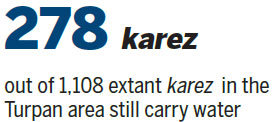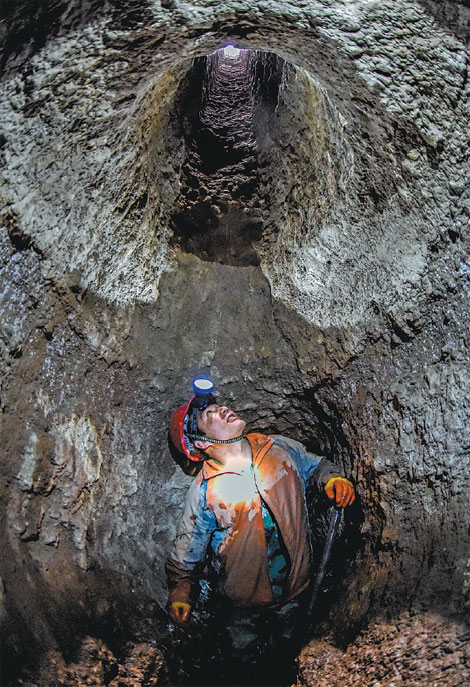Keeping the 'blood of Turpan' circulating
By Cui Jia (China Daily) Updated: 2015-04-16 07:49
|
|
Developmental disagreements
The karez system is considered one of China's greatest surviving ancient man-made structures, but experts are unable to agree on who developed the system in Turpan, Chen said.
Some say the technique was passed on by travelers from inland China about 2,000 years ago, while others argue that it was imported from Central or Western Asia, a plausible theory given that karez are also found in Afghanistan and Iran. A third group believes that the local people invented the system as a survival strategy in the Fire State.

Chen, 34, was born in Turpan and grew up drinking water from the local karez. "The karez link the people of Turpan together. People from different ethnic groups meet at the karez and learn about each others' cultures. Sadly, the one I used to drink from has now dried up," he said.
The State Council recently upgraded Turpan's status from prefecture to city to improve administrative efficiency and help accommodate its development as part of the Silk Road Economic Belt, which has been proposed by President Xi Jinping with the aim of improving cooperation with countries in Asia, Europe and Africa.
Chen said the status upgrade is good news, but he is concerned about whether Turpan's extremely limited water resources will be sufficient to support all the development projects. The locals are heavily reliant on borehole water that's pumped to the surface from wells as deep as 200 meters underground, and the area's groundwater resources have been already excessively exploited, he said.
"The ancient karez system is very environmentally friendly because it just collects and transports natural water. We should encourage people to use more karez water. Unlike other cultural relics, such as the remains of ancient cities, human activities are good for the karez. The more people that use the karez, the better the system can be protected," he added.
"These ancient structures were essential to people on the ancient Silk Road, and they can continue to support life on the Silk Road Economic Belt 2,000 years later. How magical is that?"
Xinhua contributed to the story.
- Govt encourages people to work 4.5 days a week
- Action to be taken as HIV cases among students rise
- Debate grows over reproductive rights
- Country's first bishop ordained in 3 years
- China builds Tibetan Buddhism academy in Chengdu
- Authorities require reporting of HIV infections at schools
- Typhoon Soudelor kills 14 in East China
- Police crack down on overseas gambling site
- Debate over death penalty for child traffickers goes on
- Beijing to tighten mail security for war anniversary








